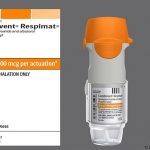
Contents
- 1 Is It Genital Warts or Skin Tags?
- 1.0.1 What are symptoms and signs of genital warts vs. skin tags?
- 1.0.2 What are causes of genital warts vs. skin tags?
- 1.0.3 How to diagnose genital warts vs. skin tags
- 1.0.4 Treatments for genital warts vs. skin tags
- 1.0.5 What are the 10 most common STDs?
- 1.0.6 1. Human papillomavirus (HPV)
- 1.0.7 2. Trichomoniasis
- 1.0.8 3. Chlamydia
- 1.0.9 4. Gonorrhea (The Clap)
- 1.0.10 5. Syphilis
- 1.0.11 6. Genital herpes
- 1.0.12 7. Hepatitis B
- 1.0.13 8. Human immunodeficiency virus/Acquired immunodeficiency syndrome (HIV/AIDS)
- 1.0.14 9. Bacterial vaginosis
- 1.0.15 10. Pubic lice
- 1.0.16 How to prevent STDs
- 1.0.17 Subscribe to MedicineNet’s Skin Care & Conditions Newsletter
Is It Genital Warts or Skin Tags?
Genital warts are contagious skin growths around the vagina, penis, or anus caused by the human papillomavirus virus (HPV). Skin tags are tiny growths that occur in skin folds like the neck, armpits, groin, and eyelids, and are not contagious.
What are genital warts?
Genital warts are small skin growths around the vagina, penis, or anus that are usually painless and harmless. Warts are benign and caused by the human papillomavirus (HPV), making them highly contagious.
Skin tags are tiny growths in skin folds like the neck, armpits, groin, and eyelids. These fleshy growths are usually very small and protrude. They can resemble flaps as they move when touched. Skin tags may not be immediately noticeable due to their color, which is similar to or slightly darker than the surrounding skin.
Signs of genital warts
Rough or smooth bumps appearing around the vagina, penis, or anus are signs of genital warts. Genital warts are a symptom of HPV and not a separate condition. It may take months or years for a breakout of genital warts to occur after contracting the HPV virus.
Skin tags are easily identifiable as small flaps of skin near body folds. In rare cases, they may be mistaken for moles or warts.
Causes of genital warts
Genital warts are caused by HPV, a naturally occurring virus with over 40 variations. Anyone can have HPV, and most adults will contract some form of the virus in their lifetime. Certain strains of HPV are responsible for genital warts.
Since HPV is highly contagious, it can be transmitted through sexual contact with an infected person, even if they have no visible genital warts.
The exact cause of skin tags is unknown, but genetics may play a role as they can run in families. The prevailing theory is that skin tags form due to friction or skin rubbing together.
Although common among individuals with diabetes, insulin resistance may also contribute to the development of skin tags. Additionally, a study found HPV to be present in many people with skin tags, suggesting the virus may be a factor.
Diagnosing genital warts
Doctors diagnose warts based on their appearance during a physical examination. They may scrape away the top layers of a wart to assess its texture and perform a biopsy.
Visual diagnosis is typically sufficient for skin tags. Additional testing may be requested if a different skin condition is suspected, in which case a biopsy of the skin cells or blood work may be required to rule out potential harm or danger to the body.
IMAGES
Treating genital warts
Genital warts require medication specifically intended for treating sexually transmitted diseases. While the condition cannot be cured due to its viral nature, antiviral medications can help alleviate symptoms and prevent future outbreaks.
Doctors can remove skin tags by freezing them with liquid nitrogen, burning them with a specialized probe, or cutting them off with scissors. Home remedies include applying topical treatments like tea tree oil or apple cider vinegar, or tying a string or band around the base of the skin tag to cut off circulation.
Genital warts and skin tags can be distinguished based on their appearance and location. While skin tags may occur in the creases of the legs near the genitals, they have a distinct texture from genital warts. Genital warts are closer to the genitals and have a cauliflower-like texture, while skin tags are fleshy flaps of skin.
What are the 10 most common STDs?
Sexually transmitted diseases, also known as sexually transmitted infections, are prevalent worldwide. Millions of people in the United States are diagnosed with at least one STD annually.
STDs are often transmitted through sexual contact, including vaginal, anal, or oral sex. Some STDs can also spread through intimate rubbing, grinding, or non-sexual means such as blood or blood products.
1. Human papillomavirus (HPV)
Signs and symptoms: Genital warts that can be raised, flat, or cauliflower-shaped.
Is it curable? No, but treatment can help eliminate warts and vaccines are available for prevention.
2. Trichomoniasis
Symptoms: Minor discharge or burning with urination in men. Yellowish-green vaginal discharge with odor, itching, painful sex, or urination in women. Only 30% develop symptoms.
Is it curable? Yes, but if left untreated can cause pelvic inflammatory disease and prostatitis.
3. Chlamydia
Symptoms: Burning or itching of genitals and abnormal vaginal discharge in women. Discharge from the penis in men. Painful urination.
Is it curable? Yes, but if left untreated can cause infertility.
4. Gonorrhea (The Clap)
Symptoms: Burning during urination, vaginal or urethral discharge, pelvic pain in women, swelling of the testes and discharge from the penis in men.
Is it curable? Yes, but if untreated can cause pelvic inflammatory disease and male infertility.
5. Syphilis
Symptoms: Painless sore on the genitals or anal area, rash on feet, palms, or other parts of the body, enlarged lymph nodes, fever, fatigue, and hair loss.
Is it curable? Yes, but if untreated can cause nerve damage, blindness, paralysis, and be life-threatening.
6. Genital herpes
Symptoms: Fluid-filled blisters known as herpes sores that ooze, crust, and eventually heal. Tingling or burning sensation a day before the sores appear. Fever and chills.
Is it curable? No, but antiviral treatment can reduce outbreak severity. Creams and lotions can soothe sores.
7. Hepatitis B
Symptoms: Nausea, abdominal pain, possible absence of symptoms for years.
Is it curable? No, but there is a vaccine for prevention.
8. Human immunodeficiency virus/Acquired immunodeficiency syndrome (HIV/AIDS)
Symptoms: Flu-like symptoms, swollen lymph nodes, rash, night sweats, sore throat, recurrent mouth ulcers, unintentional rapid weight loss, prolonged diarrhea with new infections.
Is it curable? No, but antiretroviral medications can suppress virus multiplication.
9. Bacterial vaginosis
Symptoms: Thin, white, gray, or green vaginal discharge, vaginal itching, foul-smelling "fishy" odor, burning during urination.
10. Pubic lice
Symptoms: Itching, small red bumps or spots on the skin, blue spots on thighs or lower abdomen, dark brown powder (louse droppings) on the skin or in underwear.
How to prevent STDs
Prevention is key when it comes to sexually transmitted diseases. Safe sex practices include using condoms and dental dams, limiting sexual activities to one partner, and avoiding casual sex. Educate yourself on modes of transmission and seek vaccination for prevention. If you have an STD or suspect you are at risk, get tested and encourage your partner to do the same. It is important to communicate openly about sexual health and seek early treatment if needed.
Subscribe to MedicineNet’s Skin Care & Conditions Newsletter
By clicking "Submit," I agree to the MedicineNet Terms and Conditions and Privacy Policy. I also agree to receive emails from MedicineNet and understand that I may opt out of subscriptions at any time.
Sources: American Osteopathic College of Dermatology, Centers for Disease Control and Prevention, Harvard Health Publishing, Penn Medicine, Teens Health, U.S. Department of Health & Human Services, and World Health Organization.


